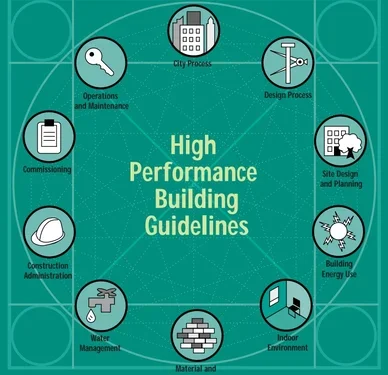Embarking on the journey of Asian-style home building, the focus shifts to high-performance tools that revolutionize traditional construction methods. This article delves into the innovative solutions driving efficiency and sustainability in this architectural realm, promising a compelling read for enthusiasts and professionals alike.
Exploring the realm of high-performance tools for Asian-style home building unveils a landscape where tradition meets innovation, shaping homes for the future.
High-performance materials in Asian-style home building
Traditional Asian building materials are known for their durability, sustainability, and aesthetic appeal. Materials such as wood, bamboo, clay, and stone have been used for centuries in Asian architecture, showcasing a harmonious blend of nature and craftsmanship.
Modern high-performance alternatives
In recent years, advancements in technology and engineering have introduced modern high-performance alternatives to traditional Asian building materials. For example, engineered wood products like laminated veneer lumber (LVL) and cross-laminated timber (CLT) offer improved strength and stability compared to conventional lumber.
Additionally, fiber cement panels and tiles provide a durable and low-maintenance alternative to traditional clay tiles.
- Engineered wood products like LVL and CLT offer higher strength and stability.
- Fiber cement panels and tiles are durable and low-maintenance.
- High-performance insulation materials like spray foam and rigid foam boards improve energy efficiency.
- Steel framing systems provide robust structural support while reducing construction time.
Benefits of using high-performance materials
The use of high-performance materials in Asian-style home construction offers numerous benefits. These materials are often more durable, energy-efficient, and environmentally friendly than their traditional counterparts. High-performance materials can also enhance the overall quality and longevity of the home, reducing maintenance costs and improving comfort for occupants.
- Improved durability and longevity of the structure.
- Enhanced energy efficiency and reduced utility costs.
- Lower maintenance requirements and longer lifespan of the building.
- Enhanced comfort and indoor air quality for occupants.
Energy-efficient design features for Asian-style homes
Incorporating energy-efficient design features is crucial for Asian-style homes to ensure sustainability and reduce energy consumption. Two key strategies to enhance energy efficiency in these homes are passive solar design and natural ventilation systems.
Passive Solar Design
Passive solar design involves utilizing the sun's energy to heat and cool a home without the need for mechanical systems. In Asian-style homes, this can be achieved by orienting the building to maximize solar gain in the winter and shading windows to prevent heat gain in the summer.
By strategically placing windows, thermal mass, and insulation, passive solar design can significantly reduce the need for artificial heating and cooling, thus lowering energy costs.
Natural Ventilation Systems
Natural ventilation systems rely on the flow of air through a building to regulate indoor temperature and improve air quality. In Asian-style home construction, incorporating features such as operable windows, roof vents, and cross ventilation can enhance airflow and reduce the need for air conditioning.
By harnessing natural breezes and creating pathways for air circulation, these systems can effectively cool the home during hot weather, reducing reliance on mechanical cooling systems.
Comparison of Energy-efficient Design Features
When comparing passive solar design and natural ventilation systems for Asian-style homes, it is essential to consider the climate, site orientation, and building materials
. While passive solar design is more effective in regions with cold winters and sunny days, natural ventilation systems work well in areas with hot and humid climates.
Both strategies have their advantages and can be combined to create a holistic approach to energy efficiency in Asian-style home construction.
Innovative technologies for Asian-style home construction
In the realm of Asian-style home construction, embracing innovative technologies can significantly enhance the efficiency and quality of the building process. From advanced construction techniques to the integration of smart home technologies, these innovations can revolutionize the way Asian-style homes are designed and built.
Advanced Construction Technologies
Incorporating advanced construction technologies such as 3D printing and robotic construction can streamline the building process of Asian-style homes. 3D printing allows for the creation of intricate architectural elements with precision and speed, while robotic construction can help in executing repetitive tasks efficiently.
By leveraging these technologies, construction timelines can be shortened, and the overall quality of the home can be improved.
Prefabrication and Modular Construction Techniques
Prefabrication and modular construction techniques offer immense benefits in the realm of Asian-style home building. Prefabricated components can be manufactured off-site and assembled on-site, reducing construction time and minimizing waste. Modular construction allows for greater flexibility in design and can expedite the building process.
By embracing these techniques, Asian-style homes can be constructed more efficiently and sustainably.
Integration of Smart Home Technologies
The integration of smart home technologies in Asian-style home design and construction can elevate the living experience for homeowners. Smart home features such as automated lighting, heating, and security systems not only enhance convenience but also improve energy efficiency. By incorporating these technologies from the initial stages of design, Asian-style homes can be transformed into modern, sustainable living spaces that cater to the needs of the residents.
Sustainable practices in Asian-style home building
Asian-style home building can benefit greatly from incorporating sustainable practices that align with the principles of Asian architecture. By utilizing eco-friendly materials and construction methods, these homes can not only reduce their environmental impact but also enhance their overall efficiency and durability.
Examples of eco-friendly materials and construction methods
- Using bamboo as a sustainable building material due to its rapid growth and renewability.
- Implementing passive solar design techniques to maximize natural light and reduce the need for artificial heating and cooling.
- Utilizing recycled and locally sourced materials to minimize the carbon footprint of the construction process.
- Incorporating green roofs and living walls to improve insulation, absorb rainwater, and create a more sustainable ecosystem.
Importance of sustainable practices in Asian-style home building
By integrating sustainable practices into the construction of Asian-style homes, we can not only reduce energy consumption and waste but also create healthier and more comfortable living environments for residents. These practices contribute to the preservation of natural resources and the long-term sustainability of the built environment.
Epilogue
In conclusion, the fusion of tradition and technology in Asian-style home construction through high-performance tools offers a glimpse into a harmonious future where efficiency and sustainability coexist seamlessly. Dive into this realm of limitless possibilities and redefine the way homes are built.
Questions Often Asked
What are some traditional Asian building materials?
Traditional Asian building materials include bamboo, wood, clay, and stone, known for their durability and aesthetic appeal.
How can passive solar design enhance energy efficiency in Asian-style homes?
Passive solar design utilizes sunlight for heating and lighting, reducing the need for artificial energy sources and enhancing energy efficiency.
What sustainable building practices align with Asian architecture principles?
Sustainable practices like using recycled materials, incorporating natural ventilation, and optimizing energy efficiency align well with Asian architectural principles.
How can smart home technologies be integrated into Asian-style home design?
Smart home technologies can be integrated through automated systems for lighting, temperature control, security, and energy management, enhancing convenience and efficiency.








